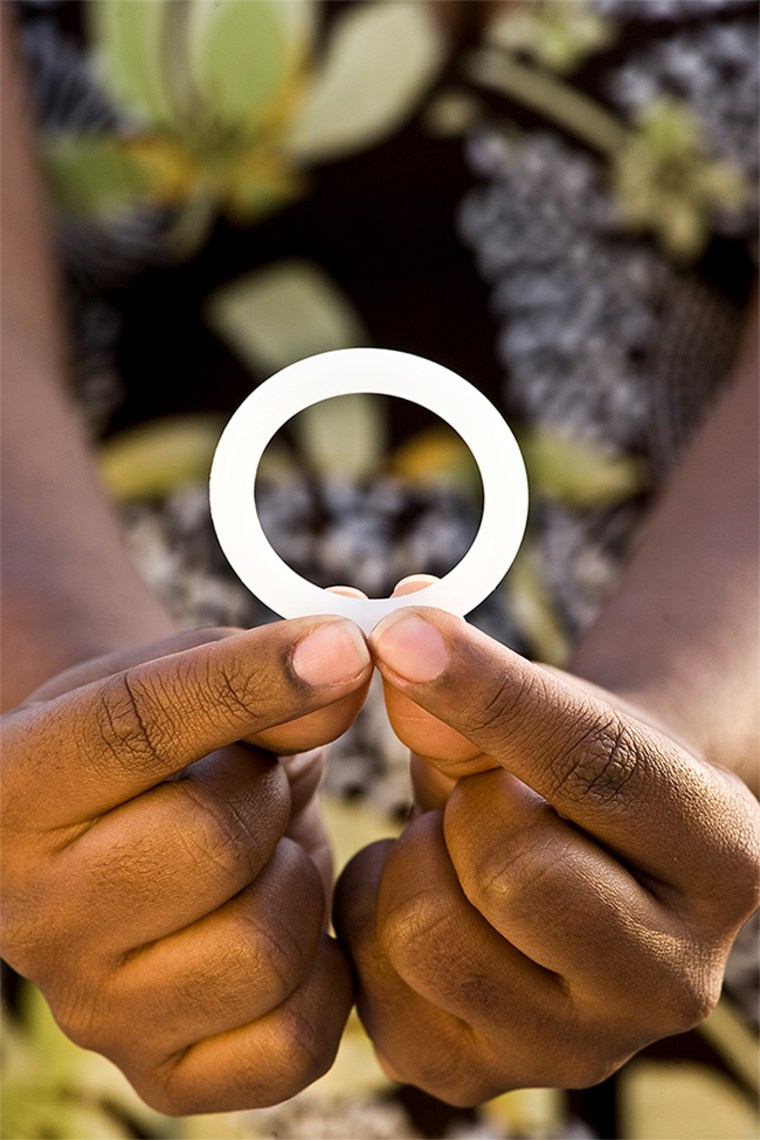A silicone ring impregnated with an antiviral drug can protect 75 percent or more of women from the AIDS virus, researchers reported Monday.
The ring has been designed to give women a discreet way to protect themselves from infection in situations where they may not be able to refuse sex or demand that a man use a condom.

The vaginal ring releases a drug called dapirivine, which can help stop the virus from infecting cells.
Earlier studies showed it could be highly effective if women actually used it. Later studies were designed to see if women could be encouraged to use it consistently and whether it worked better if they did so.
It did, a team of researchers told the International AIDS Conference in Durban, South Africa.
"The dapivirine ring could be an important option for women who urgently need new tools to protect themselves from HIV."
On average, women's risk of catching the human immunodeficiency virus (HIV) was cut by 56 percent, the team found. Women who used it the most — mostly older women — reduced the risk by at least 75 percent.
But other studies suggested it wasn’t always improper use that was to blame if the ring did not work well. A big factor might be the type of bacteria living in and on a woman’s body.
Related: U.S. To Fund More Tests of Vaginal Ring
One study of 120 women found that those with an overgrowth of bacteria called Prevotella bivia were almost 20 times likely to be infected with HIV than those with lower levels.
And a bigger study of more than 3,000 women found those with what’s considered a healthful balance of bacteria in the vagina responded better to a drug called tenofovir when it was used as a microbicide.
When bacteria Gardenerella vaginalis crowded out healthier Lactobacillus bacteria, tenofovir did not work as well, researchers told the conference.
“We are encouraged by these new analyses, which further support that the dapivirine ring could be an important option for women who urgently need new tools to protect themselves from HIV,” said Dr. Zeda Rosenberg, chief executive officer of the International Partnership for Microbicides, which developed the ring.
“While IPM seeks regulatory approval for the ring, we will continue to work to understand how we can best support women to use it consistently, and advance research to expand women’s options with additional new methods that make sense for their lives and needs.”
There's no vaccine against HIV, but taking just one HIV drug every day can protect people from catching the virus. The goal of the vaginal ring and similar products, called microbicides, is to provide women and, in some cases, men, with a variety of ways to protect themselves.
“Young women in Africa have missed out while others have benefited from global progress against AIDS. The new studies point the way to HIV prevention opportunities that can help rectify this imbalance," World Health Organization director-general Dr. Margaret Chan said in a statement.
HIV infects 36.9 million people around the world, according to the United Nations AIDS agency UNAIDS. Two million people are infected every year and more than a million die of AIDS. In the United States, more than 1.2 million people have HIV, and about 50,000 people are newly infected each year.
Experts agree that women desperately need something better than condoms to protect themselves from HIV. More than half the 35 million people infected with HIV globally are women, and many live in communities where they cannot refuse to have sex with men, even their husbands.
“With women accounting for the majority of adults living with HIV in sub-Saharan Africa, and new infections among young women double that of young men in the region, it has never been more critical to address this vital issue,” said Dr. Chris Beyrer, president of the International AIDS Society and chairman of the meeting.
More than a quarter of new infections in the United States every year are in women, and of the 1.1 million Americans with the AIDS virus, 280,000 are women, according to the Centers for Disease Control and Prevention. Black women are especially vulnerable - their infection rate is 15 times the infection rate for white American women.
“Reducing new HIV infections in young women is one of the greatest challenges in Africa."
Once-a-day pills used in an approach called pre-exposure prophylaxis or PrEP can reduce the risk of catching HIV by 90 percent of more if people use it consistently. It's been on the market since 2012 and has been recommended by the CDC since 2014. But it's not cheap and studies suggest it could be difficult for young African women to stick to.
“Reducing new HIV infections in young women is one of the greatest challenges in Africa,” said Dr. Salim Abdool Karim, director of the Center for the AIDS Program of Research in South Africa (CAPRISA), which helped conduct all of the studies.
“Based on our results, implementing targeted prevention interventions to break the cycle of HIV transmission while effectively treating bacterial vaginosis could reverse the devastating impact of the HIV epidemic in young people in Africa.”
